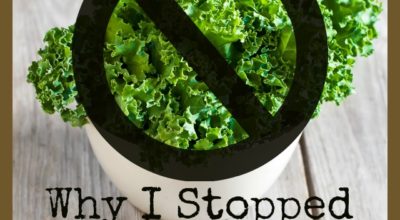If you blog-stalk my recommended blogs, you will know this next contributor as “Frugal Megan.” She is still frugal, but now I think of her as “Raw Megan.” Or at least 80% raw, as I understand it. 🙂 She is a wealth of knowledge on nutrition…and if you need some raw food recipes, she’s your girl! Enjoy!
Hi Jessica,
Hmmm, top five things I would do…
1. Stock up when things are in season. Freeze or can surplus, but I prefer freezing since I don’t have to cook it first. Some people will tell you that you must “par boil” produce before storing, but I’ve never had a problem not doing that. The cheapest way to stock up without a garden is to visit the farmers market and ask the farmers for “cull” produce- Basically like produce that isn’t pretty enough to sell at the market. They may cut you a nice deal on a whole box of stuff. You might also find “pick your own” places in the area for both conventional and organic produce. They are very reasonably priced- This year I found organic blueberry picking for $1/lb!
2. Stick to the “dirty dozen” list for organic produce. This will help you know what has the highest amount of pesticides, so you can be cost effective when buying. If peaches are high in pesticides but Onions are not, don’t be spending 2x as much for organic onions. If you do purchase non organic produce, soak in a vinegar rinse of 1 part vinegar to 10 parts water for about 2 minutes. This has been shown to both sanitize and leach pesticides from produce. Don’t soak too long though, vinegar also pulls out calcium over time!
3. Make things from scratch- Doing this helps you control what goes into your food, and your budget. Making things yourself often helps you see what is and is not healthy. If you make muffins with white flour, sugar and butter, you SEE no nutrients. If you make crackers from whole flax seeds, chunks of vegetables and a touch of sea salt, you can SEE wholesome goodness as you pour the ingredients in. Relying on making things yourself also helps you “KISS”- Keep is simple (although I refuse to call anyone stupid ;)). My kid wants a snack? he’s getting apple slices and carrot sticks, not some elaborate concoction that takes me hours to make each week. Less preparation, from whole foods, often means better health and fresher more nutrient packed ingredients.
4. Vegetarian meals. If one can incorporate more vegetarian meals in their diet and cut out some meat, they will save both money and physical health. It is cheaper and more eco friendly to create meals from in season veggies than with meat (think how much food the cow had to eat to produce a few pounds of sirloin). Not to mention it is easier on the body to break down vegetables into amino acids and build protein from scratch than it is for the body to tear apart meat formulated for a different creatures needs, pick out what it can still use and reform proteins. It literally depletes the body of stomach acid producing cells to repeatedly do this. Of course, it takes a little research and knowledge to know you’re getting enough and varied amino acids in your diet.
5. Gather coupon booklets from health food stores in the area that offer manufacturer coupons. If they are manufacturer coupons, they can be used at other stores. Find these healthy organic products on sale, and use the coupon. Be sure if you are getting snacks you realize this is more expensive and probably not as healthy as making them yourself, so only keep them on hand for emergencies or travel. This is important in my household, as there must always be food in the house that is safe for Caspian.
Well those are the five things I try to do. I can’t afford to do it all. If either of us had the room, I would say the Number One best way to eat healthy and keep cost down is a garden, but alas! $30 of seeds and a little bit of work can reap $300-500 of fresh produce. WOW!
Follow "Smartter" Each Day on Facebook!
Follow Jessica on Instagram!
Want my "Favorite Things" newsletter?
I hate lots of annoying emails, so I won't send them! Just motherhood + life tips, a few times a month.
 Follow
Follow












Leave a Reply